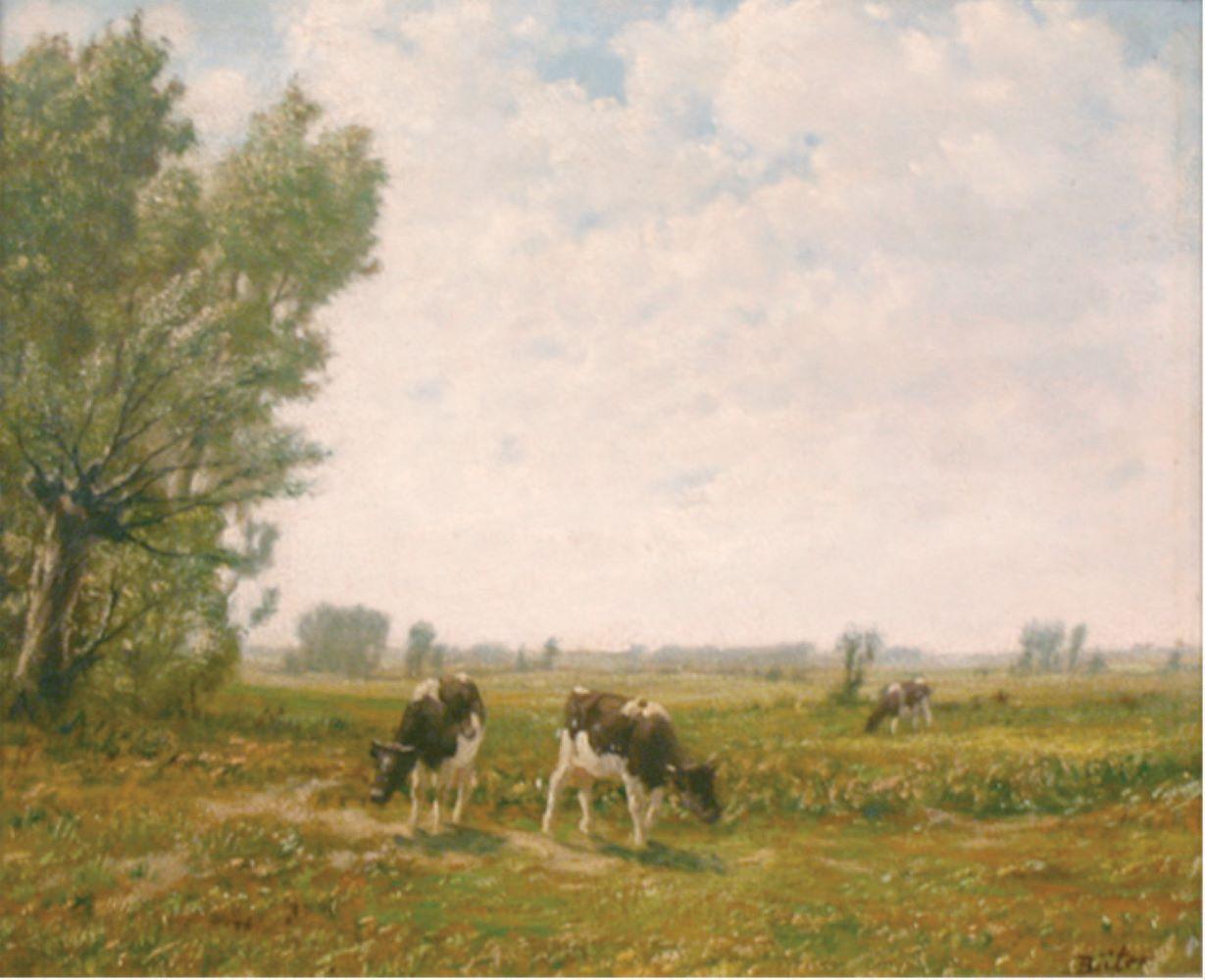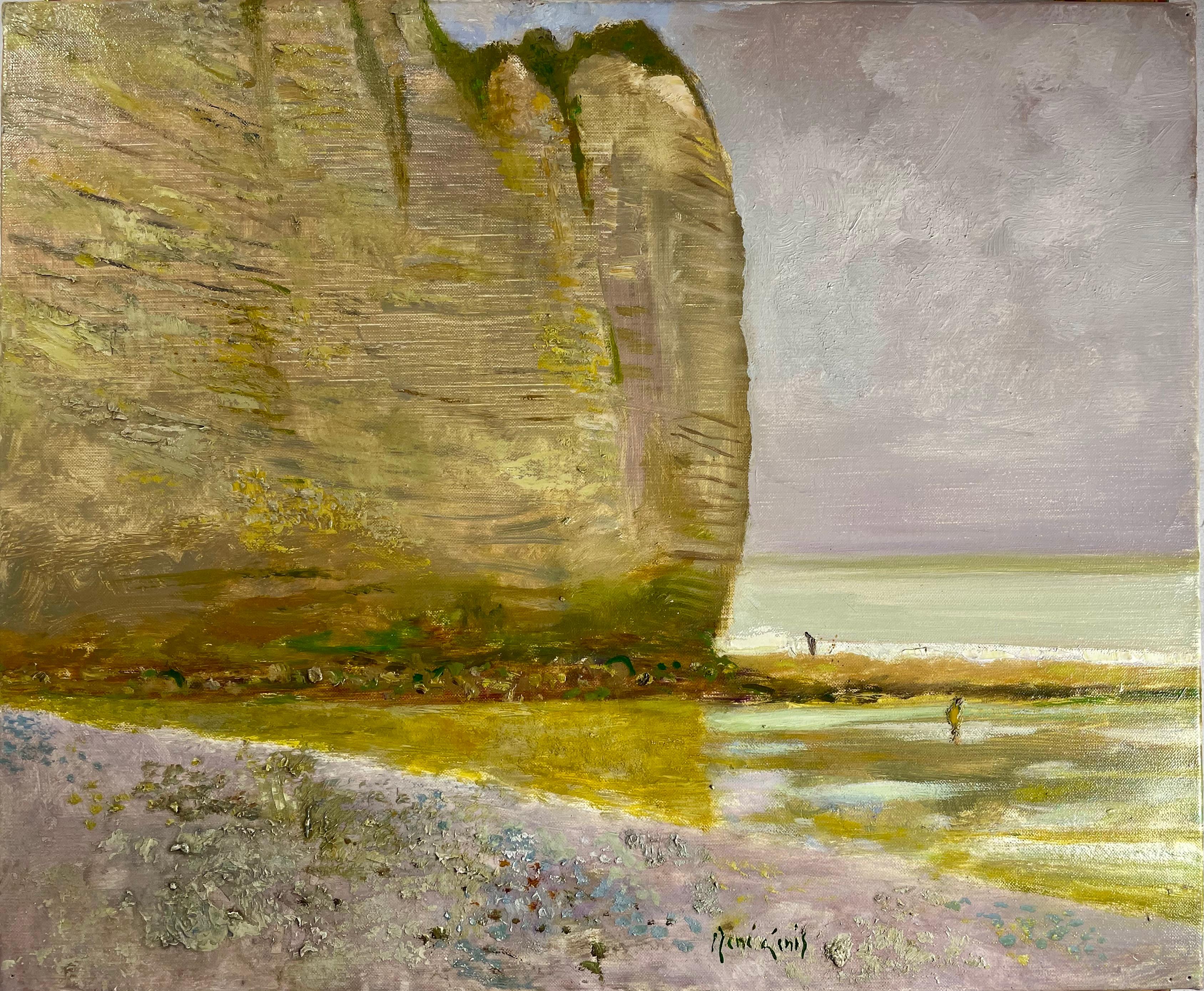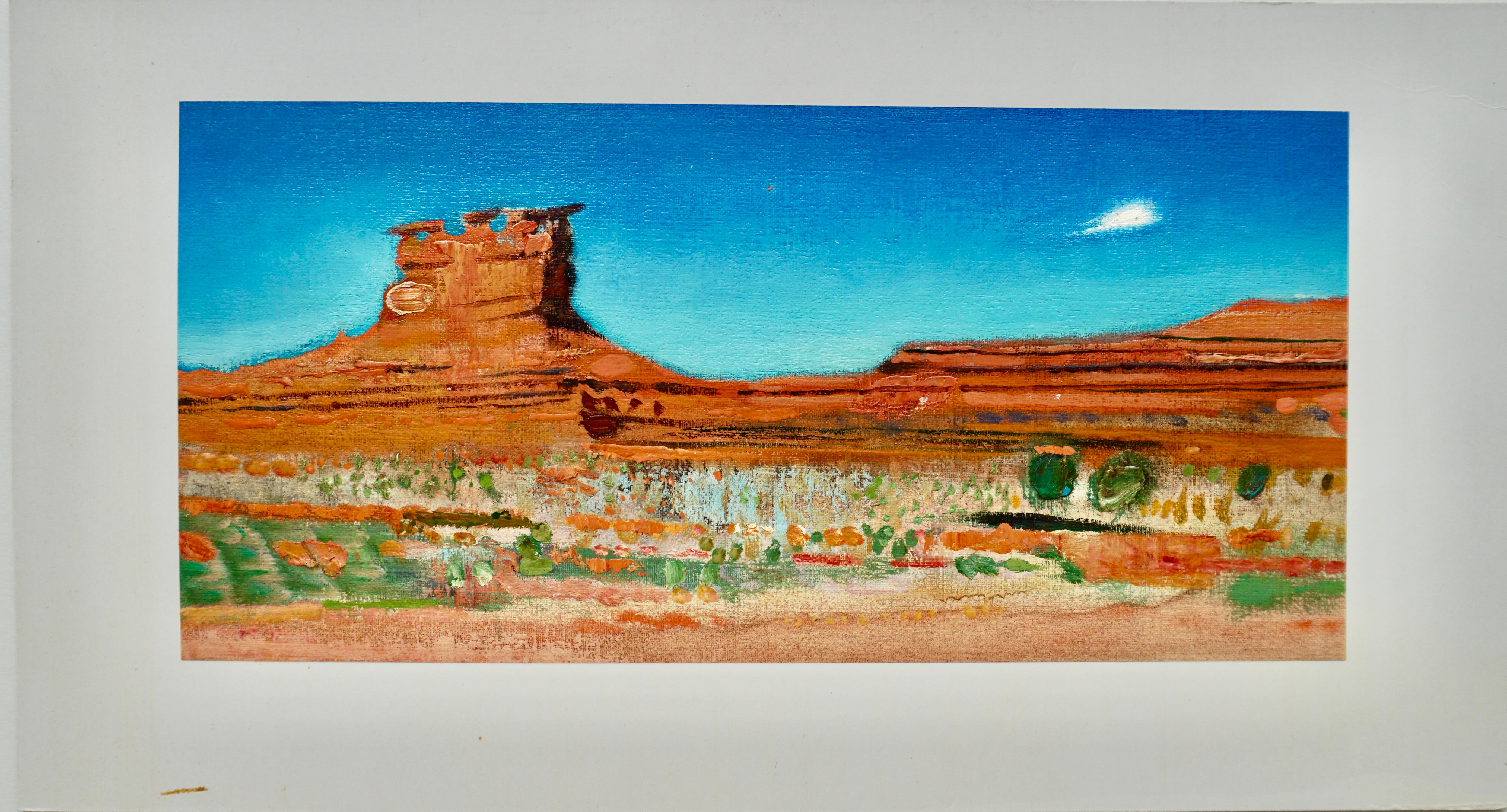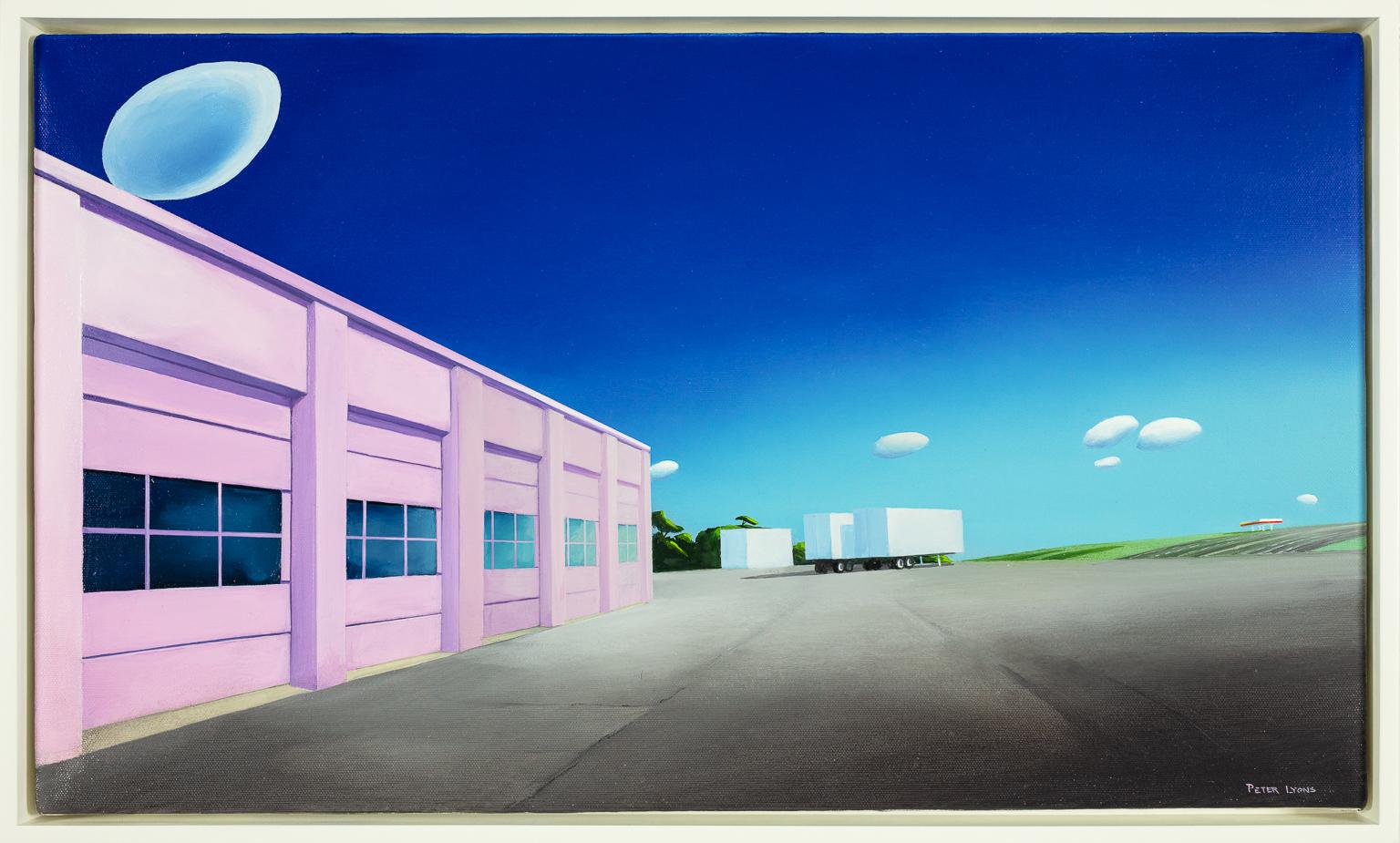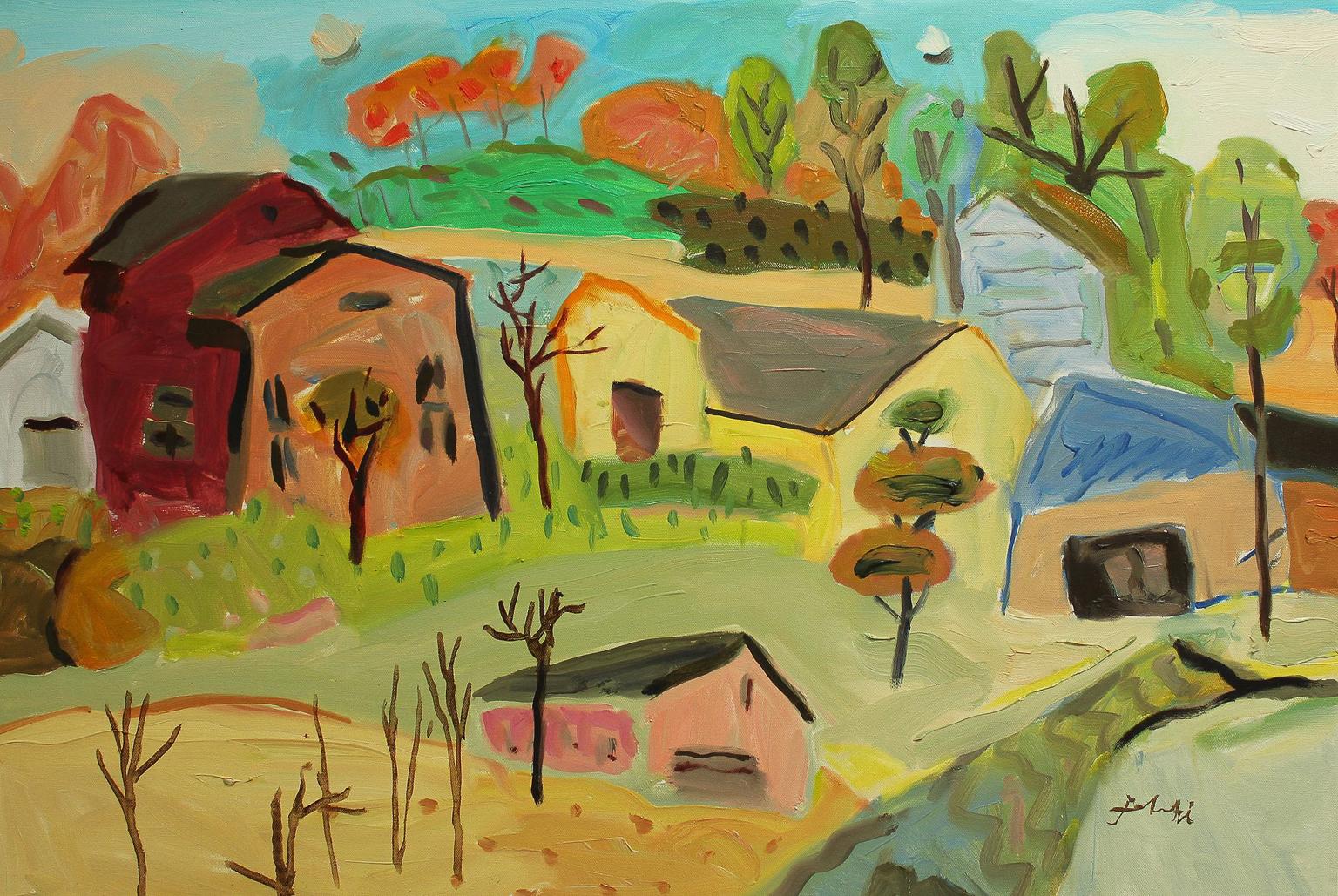Gershon Benjamin"A Country Road in Sunlight"1947
1947
About the Item
- Creator:Gershon Benjamin (1899, American)
- Creation Year:1947
- Dimensions:Height: 30 in (76.2 cm)Width: 22 in (55.88 cm)
- Medium:
- Period:
- Condition:
- Gallery Location:Lambertville, NJ
- Reference Number:
Gershon Benjamin
In a body of work that spans seven decades, obscure American modernist artist Gershon Benjamin explored a varied range of tone, style and subject matter in watercolor, oil and charcoal. Not one to resign himself to a single trademark theme, Benjamin focused on an eclectic array of subjects. His paintings included landscapes, portraits, still lifes and urban scenes.
Benjamin was born in Romania just before the turn of the 20th century. His family moved to Montreal in 1901 to escape ethnic persecution. At 10, Benjamin began studying art at the Canadian Council of Arts and Manufacturers, in Quebec. When he was 12, the Royal Canadian Academy admitted Benjamin.
In 1923, Benjamin moved to New York City, where he secured a night job in the art department of The Sun newspaper. He also enrolled in the Art Students League, where he learned engraving from the notable lithographer Joseph Pennell and drawing from illustrator John Sloan.
Benjamin found inspiration in the work of Pablo Picasso and Paul Cézanne. He depicted urban life in meditative Expressionist paintings that later drew comparisons to the Ashcan School — Benjamin painted scenes of New York City’s blocky skyline, elevated subway trains, empty streets at dawn and the Brooklyn Bridge as he saw them on his way home from his night shift at the newspaper.
In New York, Benjamin forged friendships with creative people who were as in love with art as he was and painted with them in Gloucester, Massachusetts, during the city’s hot summers. A number of his acquaintances found a fair amount of fame — including artists Mark Rothko, Raphael Soyer and Milton Avery — whereas Benjamin sought none. And when artists of the era in Manhattan and elsewhere began to work in the style that would become known as Abstract Expressionism, Benjamin continued to create representational art. He remained largely obscure throughout his career, declining to promote or market his still lifes, landscapes and portraiture.
Benjamin's works are held in a number of private and public collections including the Pennsylvania Academy of Fine Arts and the Ulrich Museum of Art.
Find original Gershon Benjamin paintings on 1stDibs.
- ShippingRetrieving quote...Ships From: Lambertville, NJ
- Return PolicyThis item cannot be returned.
- "Little House, Lambertville, NJ"By Joseph BarrettLocated in Lambertville, NJJim’s of Lambertville is proud to offer this artwork. Signed lower right Joseph Barrett (b. 1936) Joseph Barrett was born in Midland, North Carolina, in 1936 and studied at the M...Category
20th Century American Impressionist Landscape Paintings
MaterialsCanvas, Oil
- "Under the Willow"By Joseph BarrettLocated in Lambertville, NJJim’s of Lambertville is proud to offer this artwork. Signed lower right. Artist designed frame. Joseph Barrett (b. 1936) Joseph Barrett was born in Midland, North Carolina, in 1...Category
20th Century American Impressionist Landscape Paintings
MaterialsOil, Canvas
- "Melting Snow"By Charles Morris YoungLocated in Lambertville, NJJim’s of Lambertville Fine Art Gallery is proud to present this piece by Charles Morris Young (1869 – 1964). Born in Gettysburg, Pennsylvania Charles Morris Young lived most of his life in Radnor. He was recognized as a pioneer in creating American Impressionist landscapes, especially snow scenes. Young is also known for his golfing, equestrian, and hunting scenes. He studied at the Pennsylvania Academy of the Fine Arts with Thomas Eakins, Robert Vonnoh, and Thomas Anschutz. In 1897, Young set off to Paris with his wife, for continued art studies at the Academie Colarossi. Living for a time in Giverny, he became acquainted with Claude Monet, recalling how in moments of frustration Monet would throw paintings...Category
1920s American Impressionist Landscape Paintings
MaterialsCanvas, Oil
- "Autumn at Ocean Grove"By Gershon BenjaminLocated in Lambertville, NJJim's of Lambertville Fine Art Gallery is proud to present this piece by Gershon Benjamin (1899 – 1985). An American Modernist of portraits, landscapes, still lifes, and urban scene...Category
1960s Landscape Paintings
MaterialsCanvas, Oil
- "The Narrows"By Walter Emerson BaumLocated in Lambertville, NJJim’s of Lambertville Fine Art Gallery is proud to present this piece by Walter Emerson Baum (1884 - 1956). Born in Sellersville, Pennsylvania, Walter Baum was one of the only membe...Category
1930s American Impressionist Landscape Paintings
MaterialsCanvas, Oil
- "Upper Delaware"By John Fulton FolinsbeeLocated in Lambertville, NJJim's of Lambertville Fine Art Gallery is proud to present this piece by John Fulton Folinsbee (1892 - 1972). One of the finest painters to embark upon the New Hope Art Colony, John...Category
1930s American Impressionist Landscape Paintings
MaterialsCanvas, Oil
- Bernhard ButerLocated in Saint Augustine, FLArtist: Bernhard Buter (1883-1959) German Title: Rhinish Landscape Medium: Oil on Canvas Dimensions: Framed 19” x 21” , Unframed 11 x 13” Bernhard Buter paints agrarian landscapes i...Category
Early 20th Century Realist Landscape Paintings
MaterialsCanvas, Oil
- "Les Falaise Normande" (The Cliffs Of Normand)By René GenisLocated in Berlin, MDRene Genis (French 1922-2004) “Les Falaise Normande” / The Cliffs of Normand. A sea scape with high cliffs, the beach, and two fishermen. The cliffs are in browns, tans and olives a...Category
1990s French School Landscape Paintings
MaterialsCanvas, Oil
- "Monument Valley"By René GenisLocated in Berlin, MDRene Genis (French 1922-2004) Monument Valley. 1967. Beautiful oranges, browns, greens against a turquoise blue sky. Oil on canvas, laid on mat. Si...Category
Mid-20th Century Landscape Paintings
MaterialsOil, Canvas
- Early oil depicting the Great Fire of LondonLocated in London, GBThe Great Fire of London in September 1666 was one of the greatest disasters in the city’s history. The City, with its wooden houses crowded together in narrow streets, was a natural fire risk, and predictions that London would burn down became a shocking reality. The fire began in a bakery in Pudding Lane, an area near the Thames teeming with warehouses and shops full of flammable materials, such as timber, oil, coal, pitch and turpentine. Inevitably the fire spread rapidly from this area into the City. Our painting depicts the impact of the fire on those who were caught in it and creates a very dramatic impression of what the fire was like. Closer inspection reveals a scene of chaos and panic with people running out of the gates. It shows Cripplegate in the north of the City, with St Giles without Cripplegate to its left, in flames (on the site of the present day Barbican). The painting probably represents the fire on the night of Tuesday 4 September, when four-fifths of the City was burning at once, including St Paul's Cathedral. Old St Paul’s can be seen to the right of the canvas, the medieval church with its thick stone walls, was considered a place of safety, but the building was covered in wooden scaffolding as it was in the midst of being restored by the then little known architect, Christopher Wren and caught fire. Our painting seems to depict a specific moment on the Tuesday night when the lead on St Paul’s caught fire and, as the diarist John Evelyn described: ‘the stones of Paul’s flew like grenades, the melting lead running down the streets in a stream and the very pavements glowing with the firey redness, so as no horse, nor man, was able to tread on them.’ Although the loss of life was minimal, some accounts record only sixteen perished, the magnitude of the property loss was shocking – some four hundred and thirty acres, about eighty per cent of the City proper was destroyed, including over thirteen thousand houses, eighty-nine churches, and fifty-two Guild Halls. Thousands were homeless and financially ruined. The Great Fire, and the subsequent fire of 1676, which destroyed over six hundred houses south of the Thames, changed the appearance of London forever. The one constructive outcome of the Great Fire was that the plague, which had devastated the population of London since 1665, diminished greatly, due to the mass death of the plague-carrying rats in the blaze. The fire was widely reported in eyewitness accounts, newspapers, letters and diaries. Samuel Pepys recorded climbing the steeple of Barking Church from which he viewed the destroyed City: ‘the saddest sight of desolation that I ever saw.’ There was an official enquiry into the causes of the fire, petitions to the King and Lord Mayor to rebuild, new legislation and building Acts. Naturally, the fire became a dramatic and extremely popular subject for painters and engravers. A group of works relatively closely related to the present picture have been traditionally ascribed to Jan Griffier...Category
17th Century Old Masters Landscape Paintings
MaterialsOil, Canvas
- I-90, Natick, MassachusettsLocated in Gloucester, MAPeter Lyons’s technique approaches photographic realism, but the precision in his paintings is an attempt to communicate a state of awareness, rather than ...Category
2010s Contemporary Landscape Paintings
MaterialsCanvas, Oil
- Hillside BarnsBy Zygmund JankowskiLocated in Gloucester, MAZygmund Jankowski (1925–2009) painted traditional subjects with exuberant irreverence for traditional rules of color, composition, and perspective. He disparaged imitation and deligh...Category
1980s Contemporary Landscape Paintings
MaterialsCanvas, Oil
